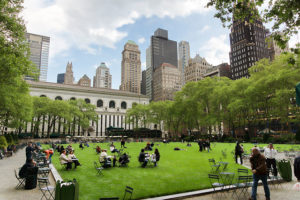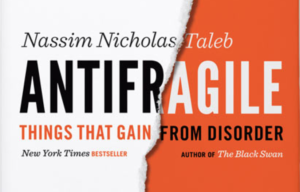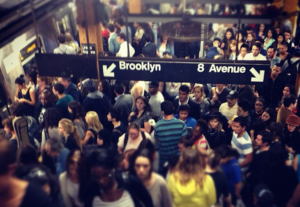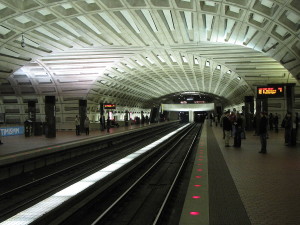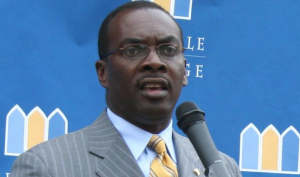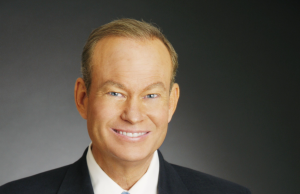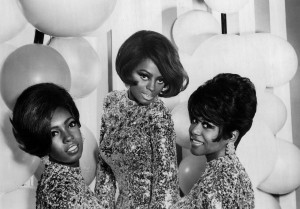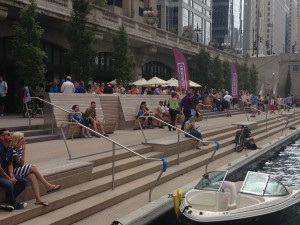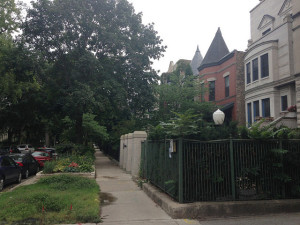William H. "Holly" Whyte, the former Fortune magazine editor best known in urban circles for his classic book The Social Life of Small Urban Spaces, famously did a report on Bryant Park in the 1970s that was ultimately used as a basis for transforming what was then known as "Needle Park." Andrew Manshel used to work for Bryant Park Corporation, the entity that actually did transform and still runs the park. (If you get a chance to see Bryant Park Corp. CEO Dan Biederman give a talk, be sure to take it). He now runs an excellent web site on … [Read more...]
Moving Beyond Resilience
Antifragile: Things That Gain from Disorder by Nassim Nicholas Taleb I had never read any books by Nassim Taleb of "black swan" fame until some hilarious retweets from his Twitter account caused me to start following him. Taleb is a witty and opinionated fellow. He's lately been hating on what he labels the "Intellectual Yet Idiot" class. Here's a recent Facebook post of his on the topic that went viral. What's a IYI? Intellectual Yet Idiot: semi-erudite bureaucrat who thinks he is an erudite; pathologizes others for doing things he … [Read more...]
Sun Belt Problems Come to New York City
Surging subway ridership in New York has driven a flurry of press recently, including this piece in the New York Times: Subway ridership in New York is in the midst of a resurgence almost unimaginable in the 1970s and ’80s, when the system was defined by graffiti and crime. Ridership has steadily risen to nearly six million daily riders today from about four million in the 1990s. But the subway infrastructure has not kept pace, and that has left the system with a litany of needs, many of them essential to maintaining current service or … [Read more...]
Why You Should Think Twice Before Building a Rail Transit System
The Washington Metro system was shut down completely for a day this week to allow crews to inspect all of the power cables in the system. They found 26 cables and connectors in need of immediate repair. This is just the latest in a series of safety problems and breakdowns that have plagued the system. Metro has a large unfunded maintenance liability. This doesn't surprise us because we expect American transit systems to have a backlog. The difference is that unlike NYC, Chicago, Boston, etc., which have systems a century old, the … [Read more...]
Mayor Byron Brown on Buffalo’s “Green Code”, Architecture, Economy, and More
I was privileged to get to record a podcast with Mayor Byron Brown while researching my article on Buffalo for City Journal this spring. Coming after a very tough 2007 Ed Glaeser article in City Journal on the city, it was very gracious of the mayor to agree to talk with me. I want to personally thank and honor him for that. If you do nothing else, listen to the section of the interview about the Buffalo Green Code. This is one of the most important developments ongoing in major American cities right now. Buffalo is completely re-writing … [Read more...]
Mayor Mick Cornett Explains Oklahoma City’s Transformation
In addition to my article about Oklahoma City's transformation, I also sat down with Mayor Mick Cornett to have him describe it in his own words. If the audio embed doesn't display for you, click over to listen on Soundcloud. We covered a number of topics during the talk, including. 0:00 - Introduction and the effect of the federal building bombing 4:20 - The Metropolitan Area Projects (MAPS) program 5:33 - Is Oklahoma City's economy just oil and gas? 7:32 - Securing water supplies for a city in an arid region 8:51 - OKC has had … [Read more...]
How Urban Planning Made Motown Records Possible
I'm reading Once in a Great City: A Detroit Story by David Maraniss, a book I plan to review for City Journal. But I want to highlight something briefly that really caught my eye about Motown Records. It's no secret Detroit punches above its weight in musical influence, and the Motown sound was clearly a big part of that. Maraniss asks "Why Detroit? What gave this city its unmatched creative melody?" He lays out his theory of the case with regards to Motown Records. The family piano's role in the music that flowed out of the … [Read more...]
A Riverfront Revelation in Chicago
The image we have of Chicago in our minds is heavily shaped by its lakefront. The importance of the lakefront as public space was recognized long ago when the city built its magnificent lakefront park system, choosing to largely turn its back on industrializing the lake. Chicago was heavily industrialized, however, But the main "harbors" along which this was done were the Chicago and Calumet Rivers. The Chicago River heavily shaped the history of the city and do this day defines the boundaries of the Loop business district. Yet the city … [Read more...]
Susan Chin on the Spaces Under the Elevated
Following on to my post yesterday about the a project called Under the Elevated that is looking at the in New York City that exist under the elevated transportation infrastructure of the city, I also was able to sit down with Susan Chin of the Design Trust for Public Space and talk for around ten minutes about the project. I would describe the Design Trust as a sort of R&D lab for public space improvements in New York. They do very early stage conceptual studies of things like spaces under elevated trains, and develop ideas that can then … [Read more...]
When High Density Is Humane, Chicago Edition
Kenmore Ave. looking south from BeldenAs a follow-up to my piece on the humane density of New York's Upper West Side, I was in Chicago last weekend and took some snaps of the same effect in that city share with you. These pictures are of Lincoln Park, a North Side neighborhood that is among the city's most prestigious. It's about three square miles, extending from the lakefront park of the same name west to around Clybourn Ave. The density is 20,000 per square mile. This is far lower than the Upper West Side, but the comparison is not quite … [Read more...]
- « Previous Page
- 1
- 2
- 3
- 4
- 5
- …
- 12
- Next Page »
